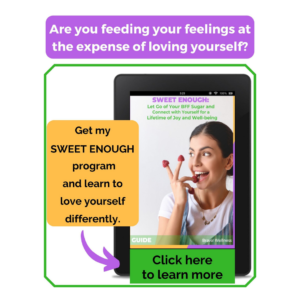[This is Part 5 of a series. If you missed any of the previous posts, please scroll to the bottom for links.]
Do any of these scenarios sound familiar?
- You’re picking up breakfast from the diner and the bakery counter looks so scrumptious. Like most days, you’re running late and anxious about the day ahead of you. You order a chocolate croissant to eat while you’re waiting for your order because doing something will take your mind off the time.
- The 10:30 am meeting is dragging. Colleagues are going ‘round and ‘round on a subject, really not listening to each other, and nothing is getting done. You need some energy and finally succumb to the donuts that have been sitting in front of you for 90 minutes even though you are not hungry.
- The emails and text messages just don’t seem to stop. All day long people are asking you for advice or to work on projects because “you’re so good.” The stress is getting to you and you need a break. You know a walk around the block will help you relax a bit but instead opt for the candy in the vending machine and a diet soda.
What do the above have in common? Eating because the food is in front of you or easy to get to, not because you are physically hungry; eating because you’re stressed and anxious.
Recognizing the difference between physical and emotional hunger is key to ending your struggle with emotional eating
You need to evaluate your hunger levels. Are you eating when you are already feeling full? If so, ask yourself why. Slow down and decide if you really need another helping of mashed potatoes. If you’re hungry, eating more is not a bad thing. But consider that perhaps another serving of protein will sustain you more than mashed potatoes. Is a cookie going to add to your afternoon pick-me-up as you drink some coffee, or is it going to give you a stomach ache that will hinder your focus for the rest of the day since you had a filling lunch are a feeling satiated?
Recognizing when you are truly physically hungry and how hungry you are can help you make healthy choices around when and what to eat.
Physical hunger tends to develop slowly, decrease with ease, and include a variety of foods. Emotional hunger can often appear suddenly, need instant gratification, and only be satisfied with specific foods (hello, cravings!). Furthermore, physical hunger isn’t usually associated with negative emotions, while emotional hunger is often accompanied by guilt, shame, overwhelm, and feelings of weakness.
Listen to your body
The best way to answer the question as to whether or not you are really hungry is to listen to your body. Physical hunger is about your body needing nourishment and fuel to keep you energized and focused. Ask your body what it needs—food or something else— then give it what it needs. And once you give your body food, observe how you feel so you know when you’ve had enough.
Next time, I’ll be sharing about the connection between family history and emotional eating….stay tuned. And if you’ve missed any installments, here are the links you need:
Part 1 Make Peace with Food, Your Mind, and Your Body
Part 2 Understand How Emotional Eating Works
Part 3 Keep a Balanced Perspective
Part 4 Do You Feel Out-of-Control Around Food?


